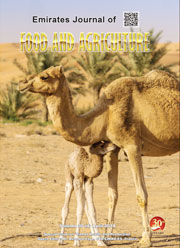THE EFFECTS OF ETHEPHON ON THE RIPENING OF VIETNAMESE LATUNDAN BANANAS(MUSA SAPIENTUM)
DOI:
https://doi.org/10.9755/ejfa.v26i3.15853Keywords:
Ethephon, Latundan bananas, Musa sapientum, Storage, Reducing sugarAbstract
Nowadays, there are many types of chemicals that have the ability to mature and affect the quality of banana fruit. The purpose of this study is to investigate the influence of ethephon (2-chloroethyl phosphonic acid) on the ripening of Latundan bananas (Musa Sapientum). Latundan bananas are the most common fruit in Vietnam and other Asian countries; they have high protein and sugar levels. The samples were soaked into ethephon at different concentrations of 0, 1.0, 1.5, 2.0, 2.5 and 3.0% (v/v), it were stored in plastic crates covered with canvas, storage temperature at 31±2.3°C, humidity 71±11.37 %. The evaluation criteria used in this study were ripe ratio, weight loss, reducing sugar content, acidity, sensory evaluation and residual ethephon content of the Latundan bananas after ripening. The results showed that when Latundan bananas were soaked in ethephon at solution concentration of 2.5% (v/v) have the ability to ripen quickly, equally and have beautiful colors on the surface of the peel. In addition, the sensory qualities of bananas that are soaked in ethephon do not create discomfort for the consumers. Currently, in Vietnam, there is no regulation for the maximum content of ethephon permitted in bananas. We hope that the Ministry of public Health will issue the maximum amount of permitted ethephon residues in bananas.










 .
. 